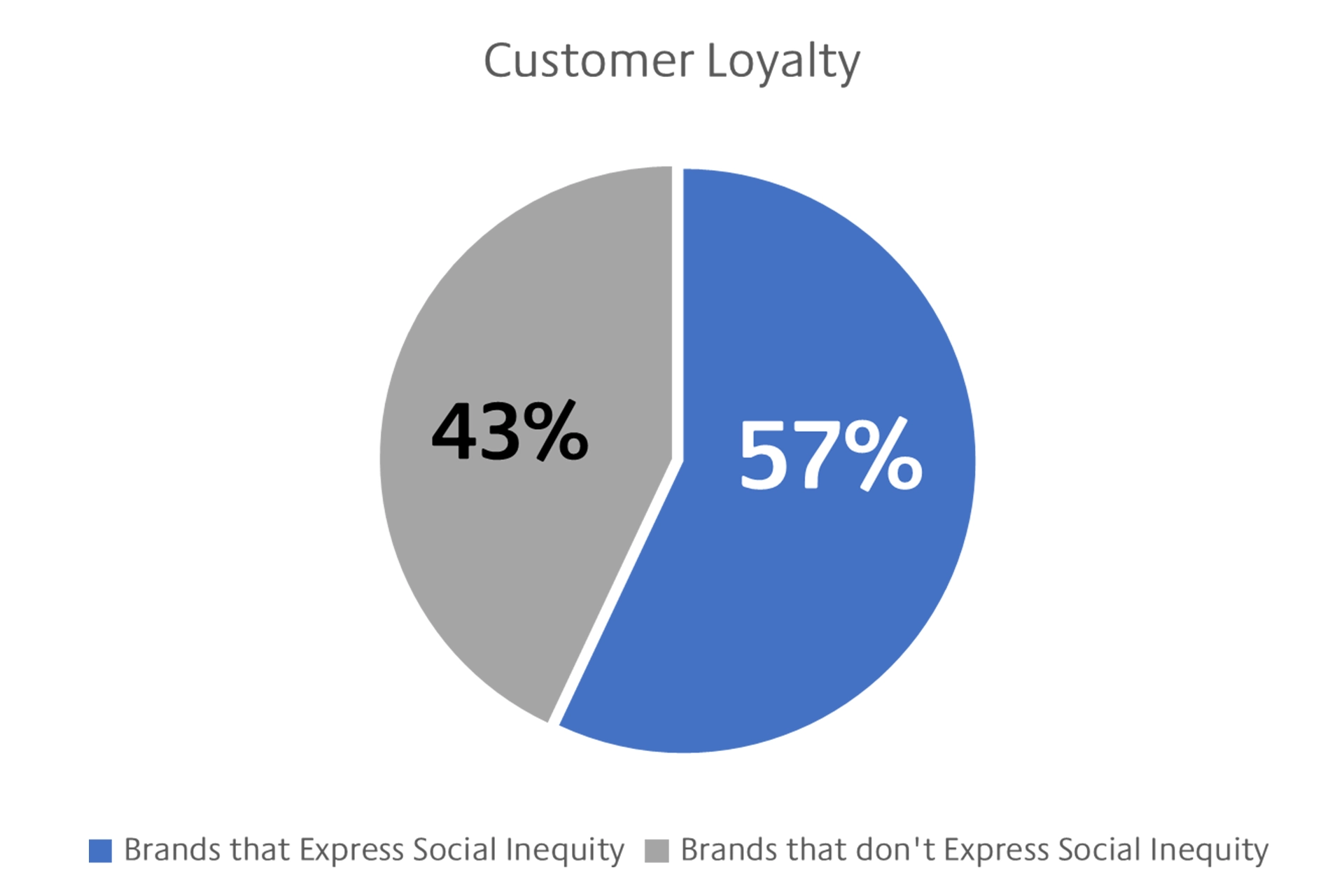DSGNJAVA
Purpose-Driven Brands:
Shaping the Future
Part 2
November 25, 2024
Storytelling and Promotions: Amplifying the Purpose of Brands
In today's information-saturated world, brands need to differentiate themselves and build emotional connections through promotional activities to capture attention and foster loyalty. The purpose of a brand, along with the narrative that supports it, should effectively resonate with consumers.
Purpose-led brands use storytelling to engage their audience emotionally. By sharing narratives aligned with consumers' values, these brands encourage customers to connect with their mission and support a greater cause. Incorporating purpose-driven design conveys the brand’s identity, evokes positive emotions, and inspires action, leaving a lasting impression that fosters deeper engagement.
Showcasing a brand's values and initiatives through promotional activities is crucial in raising awareness and generating interest among target audiences. Creative campaigns—such as eye-catching social media graphics, immersive events, and appealing partnerships—engage consumers and encourage them to connect with the cause. Well-designed efforts highlight the brand's impact and real-life stories of change, making the mission more tangible.
Modern consumers seek connections beyond mere products; they desire inspiration and alignment with their core beliefs. For instance, Intel collaborated with Vogue to share authentic stories of women entrepreneurs, which humanizes the brand and generates highly engaging content. Such heartfelt and emotional initiatives are becoming increasingly common as brands recognize the importance of fostering emotional connections.
Prioritizing Purpose over Aesthetics in Brand Designs
Generational brands often prioritize aesthetic consistency in logos and designs. However, without a strong objective, this approach may lack emotional resonance and fail to build lasting connections with audiences.
Purpose-driven brands align their designs with social or ethical missions, fostering deeper emotional connections with consumers. While aesthetics capture attention, a compelling purpose drives loyalty and builds lasting relationships. A cohesive brand identity, including consistent logos, colours, and imagery, helps establish a recognizable image that resonates, especially with millennials and Gen Z, who prefer brands advocating for positive change.

Alignment of Thought, Word, and Action with Purpose
A brand with purpose is required to align its mission across all operations, integrating core beliefs into practices. Effective communication across marketing, social media, public relations, and internal channels is key. When a brand’s actions, words, and values are consistent, it builds trust, showing that its purpose is genuinely embedded in its culture, not just a marketing slogan.
This alignment fosters authenticity, making the brand’s values clear in its messaging, practices, and customer interactions. According to Deloitte’s 2022 Survey, 57% of consumers report greater loyalty to brands addressing social inequities. Aligning with conscious consumers' expectations leads to increased support and recognition.

Deloltte's 2022 Survey
We craft impactful storytelling with a minimalist approach. Embracing the principle that 'design speaks louder by saying less' demonstrates a deep understanding of modern consumers' desire for authenticity. Focusing on clarity and emotional resonance, we create narratives that forge strong, human connections between brands and their audiences.
This approach strengthens brand identities and showcases the power of intentional design in driving action. Purposeful simplicity cultivates long-term loyalty and fosters meaningful engagement, ensuring lasting success for clients.
Benefits of Purposeful Storytelling, Promotion, and Design
Effective communication hinges on storytelling, strategic promotion, and thoughtful design to craft narratives that resonate with audiences. Aligning these pillars enhances brand strategy and leads to the following benefits:
Clear Communication: Articulates the brand’s mission and values in a straightforward and impactful way.
Forging Deeper Emotional Connections: Strengthens consumer relationships by telling relatable and impactful narratives.
Building Trust Through Authenticity: Authenticity fosters trust and cultivates genuine, long-lasting relationships between the brand and its audience.
Enhanced Brand Awareness: Expands the brand’s presence and recognition in the market.
Differentiation: Sets the brand apart from competitors by leveraging unique and compelling storytelling.
Driving Consumer Engagement: Captures attention and motivates active participation, fostering deeper interactions with consumers.
Inspiring Action: Encourages consumers to engage with the brand’s mission and take impactful steps toward driving positive change.
Enhancing Brand Loyalty: Brands with a clear purpose foster stronger consumer loyalty, encouraging long-term commitment and engagement.
Reinforcing Brand Mission and Values: Deepens the connection between consumers and the brand’s core mission and values.
Brand Advocacy: Loyal consumers and employees actively endorse and recommend the brand, fostering a strong brand fandom and enhancing its reputation.
Community Building: Cultivates a sense of belonging by connecting consumers who align with the brand's values and mission.
Employee Retention: A unified mission strengthens employee engagement and drives long-term commitment.

Case Studies
A clear and compelling purpose drives employee motivation and fosters deeper customer engagement through effective storytelling, that builds meaningful connections. Brands like Tata Group, Shree Dat Snacks, The Walt Disney Company, Toyota, and Zoho exemplify how purpose can shape brand strategies and build resilience. Ultimately, thoughtful branding is a key factor in ensuring long-term growth and success. Let us explore this further through a few case studies:
Shree Datta Snacks — Purpose in Action: Overcoming Propaganda
In an incident with one of our long-term client Shree Datta Snacks, a negative propaganda initiated by unknown sources went viral. In the face of this misinformation, the Client chose to address this issue by not reacting or explaining the truth.
They focused on their food quality and services even more. Within a few days, the whole issue was forgotten, and the brand continued doing what it did best—serving hot, fresh Maharashtrian foods. Their unwavering commitment to their mission allowed them to remain connected with their audience, even in difficult times. This highlights how a clearly defined cause is essential in crisis management — reinforcing resilience, building long-term brand loyalty, and ensuring continued consumer confidence, a brand can effectively navigate challenges, including negative propaganda.

Tata Group
Tata Group demonstrates how purpose can transcend aesthetics in brand design. With a visual identity that reflects a strong commitment to societal growth, Tata emphasizes values like trust, reliability, and community service. Its iconic logo, symbolizing stability and progress, goes beyond superficial design, reinforcing the brand’s values.
Tata has consistently aligned its branding with its mission to uplift communities and promote sustainable practices. For example, Titan Watches, part of the Tata Group, prioritizes training and employing locals from underdeveloped regions at its Hosur factory, focusing on community empowerment over corporate gain. This strategy strengthens Tata’s reputation, proving that authentic values, consistently upheld, create a deeper impact than design alone.

The Walt Disney
A notable example of a purpose-driven brand is The Walt Disney Company, whose mission is to entertain, inform, and inspire people worldwide through exceptional storytelling. This motive shapes every aspect of its brand design.
Disney’s live experiences are designed by employees known as Imagineers. They follow a disciplined approach that follows a structured pyramid of principles. The foundational elements include:
It All Begins with a Story: Every project starts with a narrative that guides design decisions, ensuring comprehensibility and emotional interest.
Creative Intent: Disney focuses on its objectives, aligning design elements to support its overarching mission and enhance the audience's experience.
Attention to Detail: The brand meticulously considers every detail, from characters to park layouts, creating immersive environments that enhance storytelling.
Theming: Thematic consistency is crucial; each detail reinforces the story and creative intent, contributing to a unified experience.
Long, Medium, and Close Shots: Disney masterfully organizes its messages to guide audiences from broad concepts to specific narratives, effectively capturing and retaining their attention.
By applying these principles, Disney creates captivating experiences while building a powerful brand identity that resonates with audiences worldwide. This approach highlights how purpose-driven storytelling is integral to achieving success in brand design.





